#paraguaya
Explore tagged Tumblr posts
Text

Un poco de la artesanía paraguaya!!
4 notes
·
View notes
Text

Louis wore a Paraguay Police Officer Hat backstage in Asunción for LTWT 2022.
#louis tomlinson fashion#louis tomlinson#fashionlouist#louis fashion#ltf22#ltwt 2022: paraguay#policía nacional paraguaya#caps
51 notes
·
View notes
Text

#free palestine#palestine#gaza#End the occupation#end the genocide#israel is committing genocide#Israel#Paraguay#Juventud comunista Paraguaya
4 notes
·
View notes
Text
No. 30 - LATAM Airlines
I wasn't entirely forthright last time. About the correct response to my questionnaire, I mean. I didn't lie. I just left out the second half.

Yes. It was a trick question. Brazil has four carriers that have, at one point or another, had solid claim to the title of flag carrier. And right now, the airline which represents them on the long-haul scale, their link to the world, their 'flag carrier'...is LATAM Airlines.

Why doesn't LATAM count? Well, because LATAM is...something quite unusual, a conglomeration of different features which appear in isolation but have yet to rear their head together, creating an admixture which I fear casts a shadow over much, if not all, of Latin America.
LATAM's story doesn't start in Brazil. It starts in Chile. But it doesn't stay there.
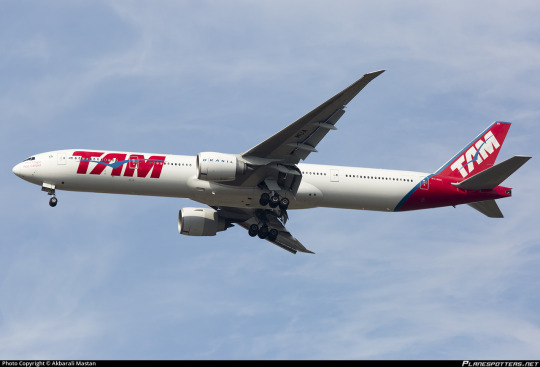
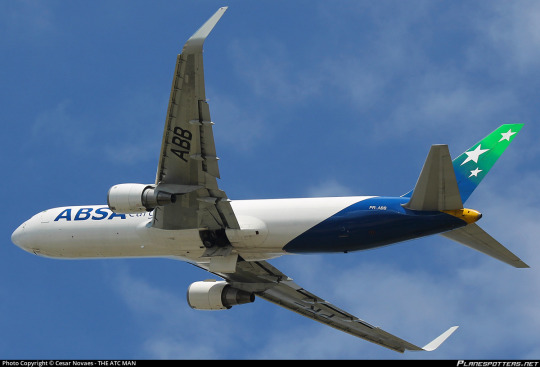
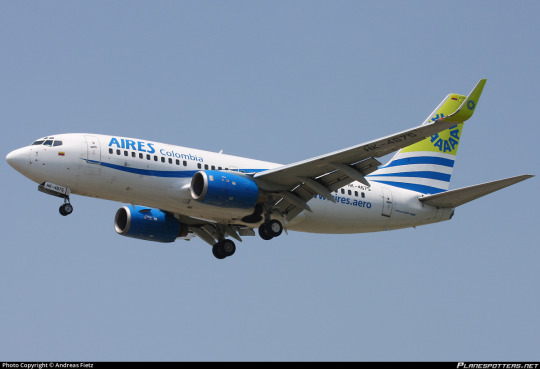
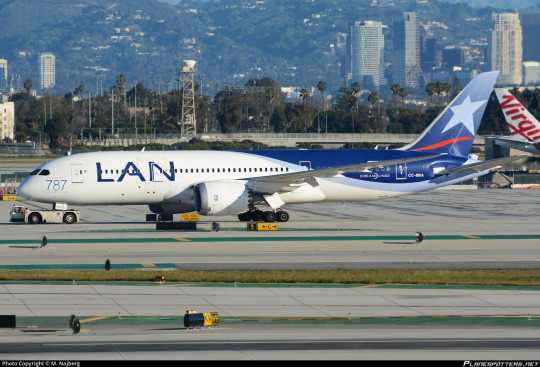
What do all these airlines have in common?

Their planes look like this now.
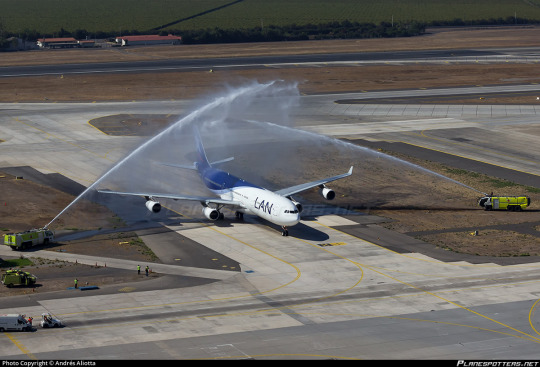
LAN-Chile was privatized in the 1990s. Until then, it had been the country's flag carrier. Now it was on the hunt to become something more. It was one thing to be the largest carrier in Chile, but there's more than just Chile out there. International carriers know this well, since they go outside of Chile.

Around the same time as LAN-Chile was privatized, LAN Perú was created as an independent company. It was a rough time for Peruvian aviation. Its flag carrier, Aeroperú, had just gone under, and its other major airline, Faucett, had lead the way for it two years earlier. They needed a new national airline, and LAN was there, identical in branding to the Chilean carrier of the same name. Unsurprisingly, it was officially made a subsidiary of LAN in 2002. Even the livery was changed.
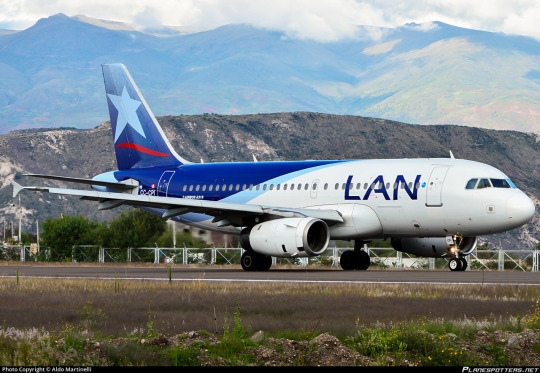
Over 70% of the market share was now held by what was essentially a Chilean airline, without even the name of the country it served written on its livery.
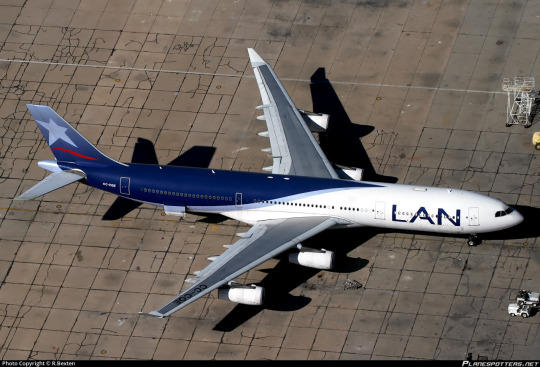
Also in 2002, LAN created another subsidiary - LAN Ecuador. It obviously looked the exact same as the other two LANs, so I have simply added another picture of a LAN Chile airplane. There is no reason I should care enough not to.
The LAN livery? Well, it's fine. I like the size of the wordmark and the way they committed to having half the fuselage covered, as should be the minimum, though other airlines do this exact shape far better; the layered light and dark blues are nice.
C. For Chile. Or maybe Peru. Or whatever else.
Another subsidiary was created, LAN Dominicana. Argentine airline Aero 2000 was acquired and became LAN Argentina. Both are now defunct.
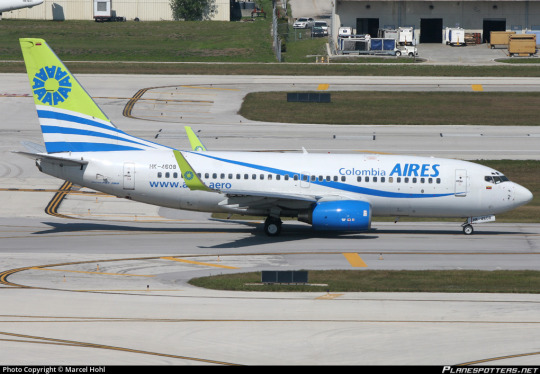
Colombia's second-largest airline, AIRES, also fell prey to the LAN infection which had now firmly planted its roots and its routes across the continent.
I actually more or less like the AIRES livery, which makes me sad. It's got a real sense of forward motion with those swooping lines and the high placement of the forward-leaning letters. It's...nothing special, but it's good enough.
It's at least worth a C+. I wish it still existed.
It could have been worse - Avianca, Colombia's flag carrier, held on, and is still in operation - one of the only challenges to LAN and what is now LATAM in South America. I'm sure they would have liked to have Avianca, and Panamanian flag carrier Copa, too, but even Copa draws the line here. But Copa and Avianca were small fry. There was only one carrier standing between them and utter domination - the largest airline in all of Latin America.
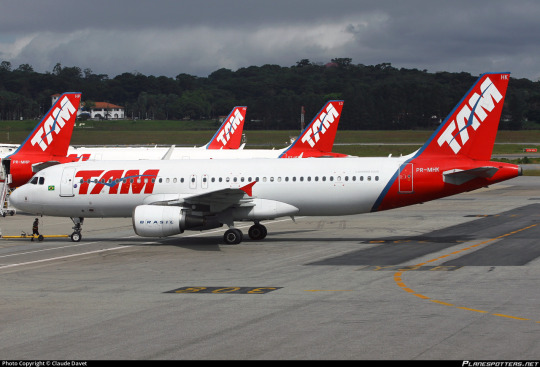
In 2011, TAM and LAN finalized a binding agreement to merge. The two companies fused into one, by far the largest holding company in Latin America, though much like the many LANs it continued to operate as separate companies. TAM still wore its own livery, but time was catching up to it.
TAM isn't a hero here. Well, nobody is, these are giant corporations that paint different things on their airlines, but my point is that TAM had done nearly the exact same thing.

LAP (Líneas Aéreas Paraguayas) was the flag carrier of Paraguay, until it wasn't. In 1994 it was privatized and sold to an Ecuadorian-Paraguayan consortium which also owned now-defunct Ecuatorean airline SAETA. (Their livery was boring.)
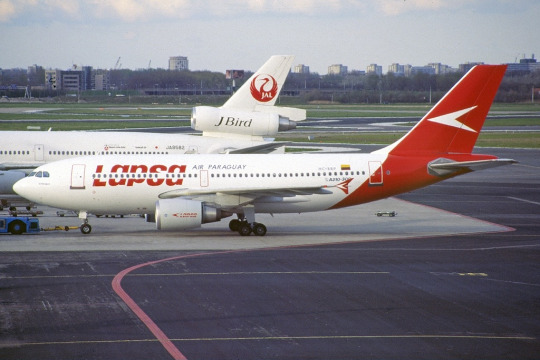
It began operations again as LAPSA Air Paraguay. Much the reverse of the LANs, this was SAETA operating under Paraguayan branding. But this only lasted until 1996, when TAM's Paraguayan subsidiary ARPA (Aerolíneas Paraguayas) acquired it and it was merged into TAM, with...you guessed it...the same livery. (Their livery was boring, though I always appreciate a nice bisected wordmark.)
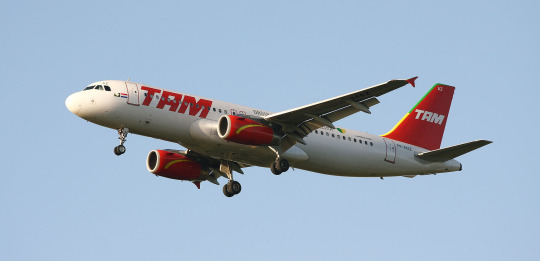
This is TAM's livery from 2005 to 2008. What was now TAM Paraguay of course shared it.
This is the point where we stop and ask: why do I care? Doesn't this happen everywhere, all the time? Didn't like, thirty legacy carriers eventually merge into five in the US? Well, none of those were really a flag carrier, as much as certain brands like TWA were massive it just doesn't feel like it's quite the same. Not to mention that, unlike LATAM, which operates separate airlines in identical branding, when Delta absorbed Northwest or United swallowed Continental the entirety of their operations were merged into one company. It was what I'd call a 'true' operational merger rather than just occurring at the corporate level, like LATAM.
But aren't a lot of flag carriers owned by some combination of the same holding companies? The best-known example: doesn't Air France own KLM?
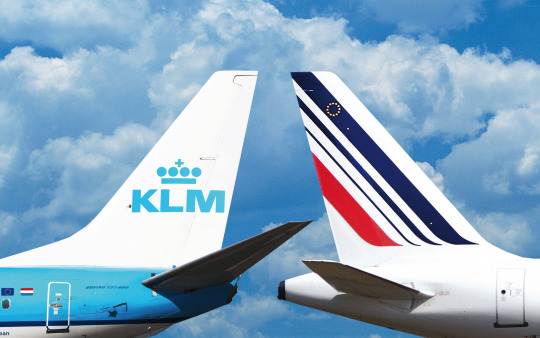
Well, sort of, yes. The merger between Air France and KLM is actually quite similar to the LAN-TAM merger in the sense that it's officially a merger but it's quite clear who's absorbing who. The merged company which became LATAM, despite taking a new name (combining LAN and TAM to make the admittedly clever LATAM) kept LAN's CEO, membership in oneworld rather than Star Alliance, and airport slots. It's 60% owned by Banco de Chile. It also keeps LAN's use of literally identical liveries for its branches instead of just mostly identical ones. All of the airlines which are part of LATAM are still operating as if nothing happened despite the fact that, in the sense of branding and identity, they just don't exist anymore.
But KLM obviously exists. In fact, KLM is an upcoming post! Because what LATAM is doing is pretty unusual!
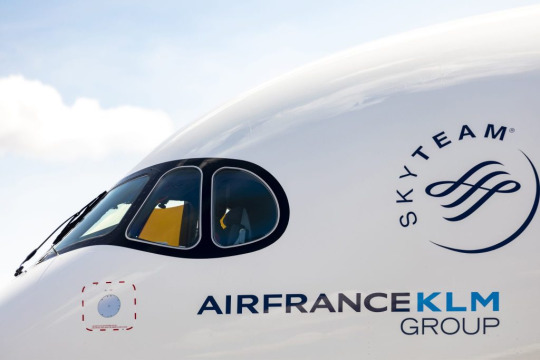
Lufthansa owns Brussels Airlines, Austrian Airlines, and whatever the flag carrier of Switzerland is. The same company owns British Airways and Iberia. None of those brands have been retired. Is it because it would cause massive backlash and thus lose money? I mean, probably, but that's never stopped companies from doing anything. I wouldn't be surprised if it were written into merger agreements in all honesty. When Davey Neeleman and his investie acquired custody of TAP it was on the condition they keep their base in Lisbon. I wouldn't be surprised if Lufthansa's contract included "let Belgium keep its flag carrier, even if it's owned by a German company".
It is almost aggressively normal for one massive conglomerate to own multiple seemingly unrelated brands. Everyone knows the thing about Mars owning every major candy at this point. But that isn't the same thing. That's like if every Mars-owned candy was branded as CANDY YOU CAN BUY IN AMERICA. Not even HERSHEY'S BAR YOU CAN BUY IN AMERICA. Just CANDY YOU CAN BUY IN AMERICA.
It's not TAM, a member of the LATAM Group. It's not LAN Perú. It's LATAM.
Perhaps the strange legacy of Brazilian flag carriers contributes to this fate. Perhaps those of other countries would be less willing to go along with it. You might think that. But the answer is far more gruesome: this is normalized in Latin America.
Avianca is an old, tenured airline with its own history. The Avianca Group is the second-largest airline holding group in Latin America and unfortunately does the exact same thing, being the death knell to flag carriers: El Salvador's TACA (which occupies a similar nominal-partner status as the former TAM), Costa Rica's LACSA, and Guatemala's Aviateca (which I would call a flag carrier by process of elimination, much like TAM), which had fallen to TACA before its absorption.
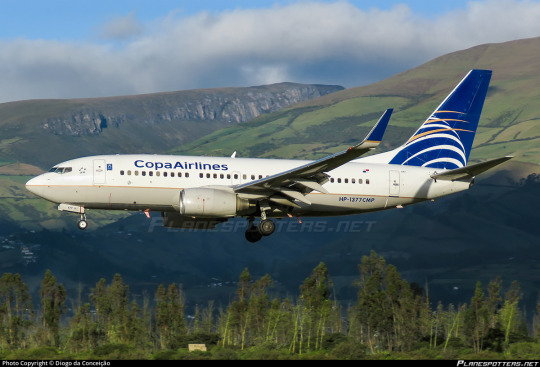
Believe it or not, Copa, which doesn't even have its own livery, is one of the largest bastions of brand identity freedom still clinging to life. Other competitively large flag carriers still operating in Latin America include Argentina's Aerolíneas Argentinas; Bolivia's Boliviana de Aviación; Cuba's Cubana de Aviación; and Mexico's Aeroméxico; though smaller flag carriers are scattered throughout it seems like basically the entirety of what could be called LATAM is now part of either LATAM or Avianca.
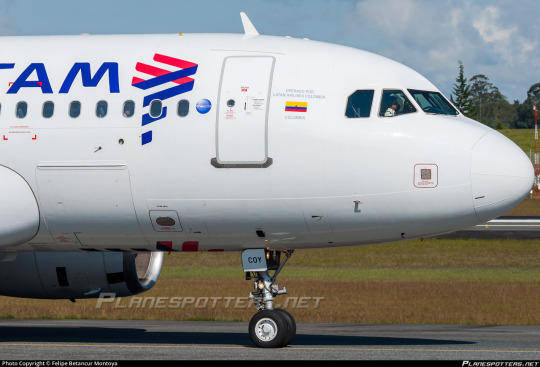
The only way to tell LATAM planes' airline of origin is by looking at the flag near the front and/or the registration, if you happen to know the registration codes for its member countries off the dome.
LATAM operates across six (formerly nine, including a cargo branch in Mexico) countries. It is the dominant airline in Chile, Ecuador, Paraguay, and Perú, and is the largest international airline in Brazil. Its branch in Colombia is outshone by Avianca, but that doesn't really matter, not to me. What matters is that five countries have no flag carrier, and isn't that weird and unnerving and sort of...bad?
This is a very baseless silly claim that means nothing, but it feels like LATAM (and Avianca, sort of) are trying to be the flag carrier of Latin America. And that's a terrible, worrying thing, given that this is an entire region of the world full of diverse countries which should have their own carrier, even if they're part of a larger international holding company. It's normal for airlines to purchase stakes or even majorities in other airlines when they're struggling financially, but it's almost the opposite of this. When Delta offered to buy a stake in JAL it felt like it was almost with the intent to preserve the JAL brand, and this is the norm. There's a reason we still have Brussels Airlines and Austrian Airlines and [whatever your guess on the questionnaire was] instead of Lufthansa Belgium, Lufthansa Austria, and Lufthansa Switzerland. Even Lufthansa gets to claim superiority over LATAM.
So when I discuss the Star Alliance Test, I am talking about something incredibly silly. It's already a little absurd when talking about carriers that are actually members of Star Alliance, and becomes moreso when talking about ones that aren't. But if I happen to discuss a carrier in Latin America, saying "I think it would be a mercy to their livery to be absorbed into LATAM" is possible. It's terrifying. The LATAM test is scarier than even the SmartLynx test by nature of what it represents.
...but is the livery bad, though?
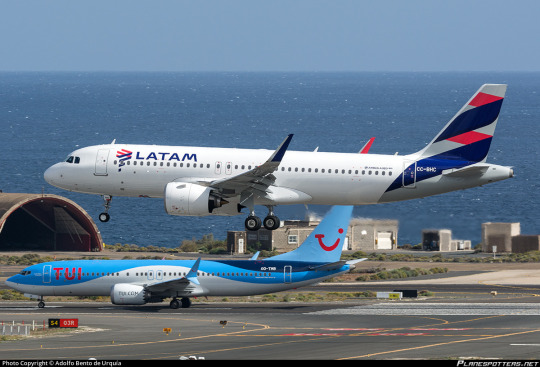
Yes it is!
To be clear, philosophically speaking LATAM deserves an F. This livery should not exist because of what it does to other carriers. But I'll be rating it neutrally of that, much like the alliance liveries. This is the point of my blog.
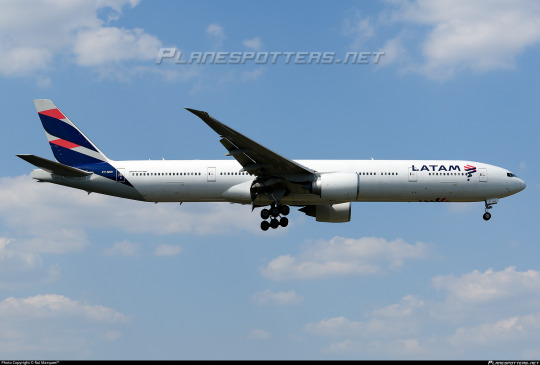
This was introduced in 2015, which really seems to be the turning point from detached tail to minimally-attached tail. Sure, it was one of the earliest adopters of this, but that doesn't make me respect the bare minimum much more. It has the same problem nearly every implementation of this does, where it looks totally adequate on shorter planes but hilariously bad on longer ones.
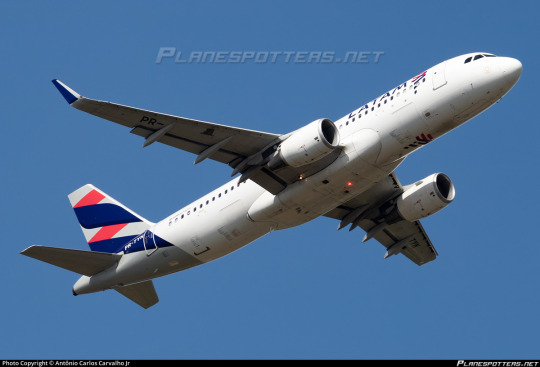
This livery in particular is begging for an extension because of this really pretty ribbon-wrapping effect. Why does everything just cut off abruptly at the same point? Why doesn't more of the grey bleed to the main fuselage? Why doesn't that nice blue ribbon keep going? Literally what is stopping you other than convention? Why is the entire underside white except for that tiny little logo, located weirdly high and small where nobody will ever see it?
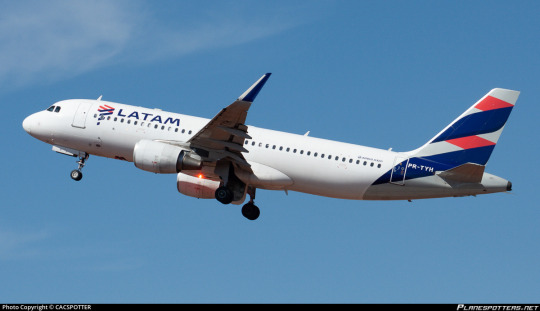
LATAM has this fantastic color scheme, a beautiful combination of fuchsia and midnight blue which looks stunning on the light cool grey they've chosen for the tail. And they blew it all on a tail-only livery with a mainly white body. They didn't even put it on the nacelles. I'm very exhausted.
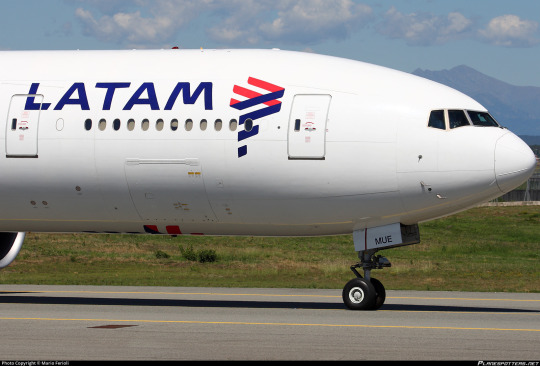
The entire livery is centered around this logo. It's approximately the shape of South America and admittedly very nice-looking. I like that the logo almost looks like a descender while the wordmark is above the windowline, but these sorts of little details are absolutely nothing when your plane is a big long white tube with a nice-looking tail transplanted on from a better livery.
LATAM's livery gets a D+.
And this is what we've lost so much to get. LAM, TAN, AIRES, SAETA...we are nearing a dark future where airports across Latin America are just lines of white planes, a thin line carved out by pretty tails cut off before their time.
#tarmac fashion week#grade: d+#grade: c#grade: c+#era: 2000s#era: 2010s#era: 2020s#latam airlines#lan airlines#aires#tam transportes aéreos#lapsa air paraguay#lineas aéreas paraguayas#region: latin america#region: brazil#region: colombia#region: chile#region: peru#region: paraguay#region: ecuador#copa airlines#long haul#compilations#lufthansa line
24 notes
·
View notes
Text


#mine#el combo hamaca paraguaya al sol y galería undefeated#siesta en hamaca paraguaya en verano no lo entenderían 🚬
7 notes
·
View notes
Text

LOUIS
24 notes
·
View notes
Text

Se consigue en www.servilibro.com.py/
5 notes
·
View notes
Text
a friend invited me to a pseudo christmas / new house inauguration party and told me to bring food and ive spent the past couple of days thinking What could i make thats both easy yet Unique and i finally realized
im gonna make sopa paraguaya 👁👁🖐
#tani's personal shit#was thinking abt hummus too but someone is probably gonna do that already#and not to brag but i make one killer sopa paraguaya#fuck yeah............
3 notes
·
View notes
Text
Me da cosa decir ahh este personaje es argentino como por diversion osea nisiquiera vivi mucho ahi entonces me siento falsa pero osea me voy a veces
3 notes
·
View notes
Text
Sopa Paraguaya y Flores



#sketch#drawing#art#my art#comida paraguaya#sopa paraguaya#flores#flowers#crayon#dibujo#my art style#argentina
2 notes
·
View notes
Photo
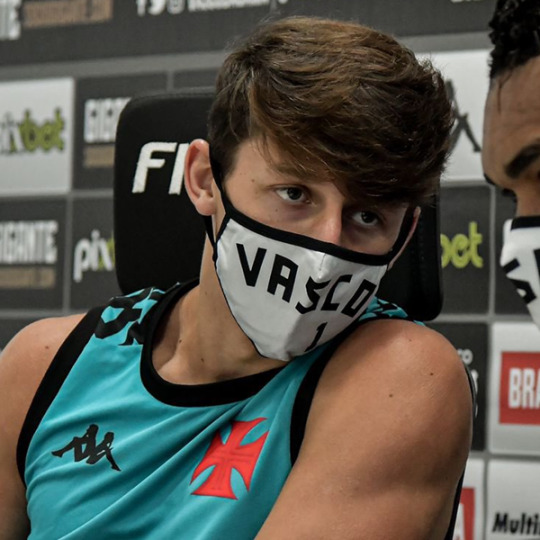





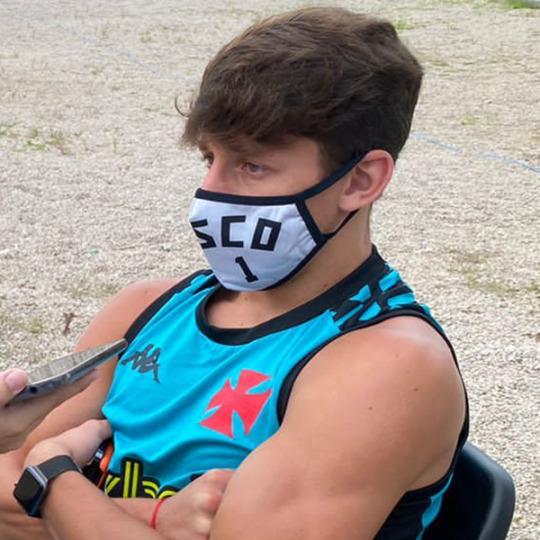


matias galarza icons
like se salvar
#icons#sem psd#vasco#crvg#vasco da gama#club de regatas vasco da gama#campeonato brasileiro#brasileirão#futebol#jogadores#matias galarza#afp#paraguay#seleccion paraguaya#seleção paraguaia
5 notes
·
View notes
Text
youtube
#touhou project#touhou fūjinroku#mountain of faith#the gensokyo the gods loved#nitori kawashiro#polca paraguaya#someone 45356#youtube
1 note
·
View note
Text
La influencia de las culturas indígenas en el arte paraguayo
Las culturas indígenas influyeron en el arte paraguayo de manera significativa. En este artículo hice un análisis al respecto y de qué modo se puede preservar estos conocimientos.
La riqueza cultural del Paraguay se debe a las manifestaciones artísticas de las culturas indígenas. Cabe resaltar que las comunidades nativas de nuestro país destacan por su labor en la cestería y la cerámica, así como también en la ornamentación plumaria. Tanto los motivos como las técnicas tradicionales se han integrado en las prácticas artísticas contemporáneas, logrando una conexión con lo…
0 notes
Text
Bro look at my national team we are not getting into the WC 😭😭😭😭

2 notes
·
View notes

